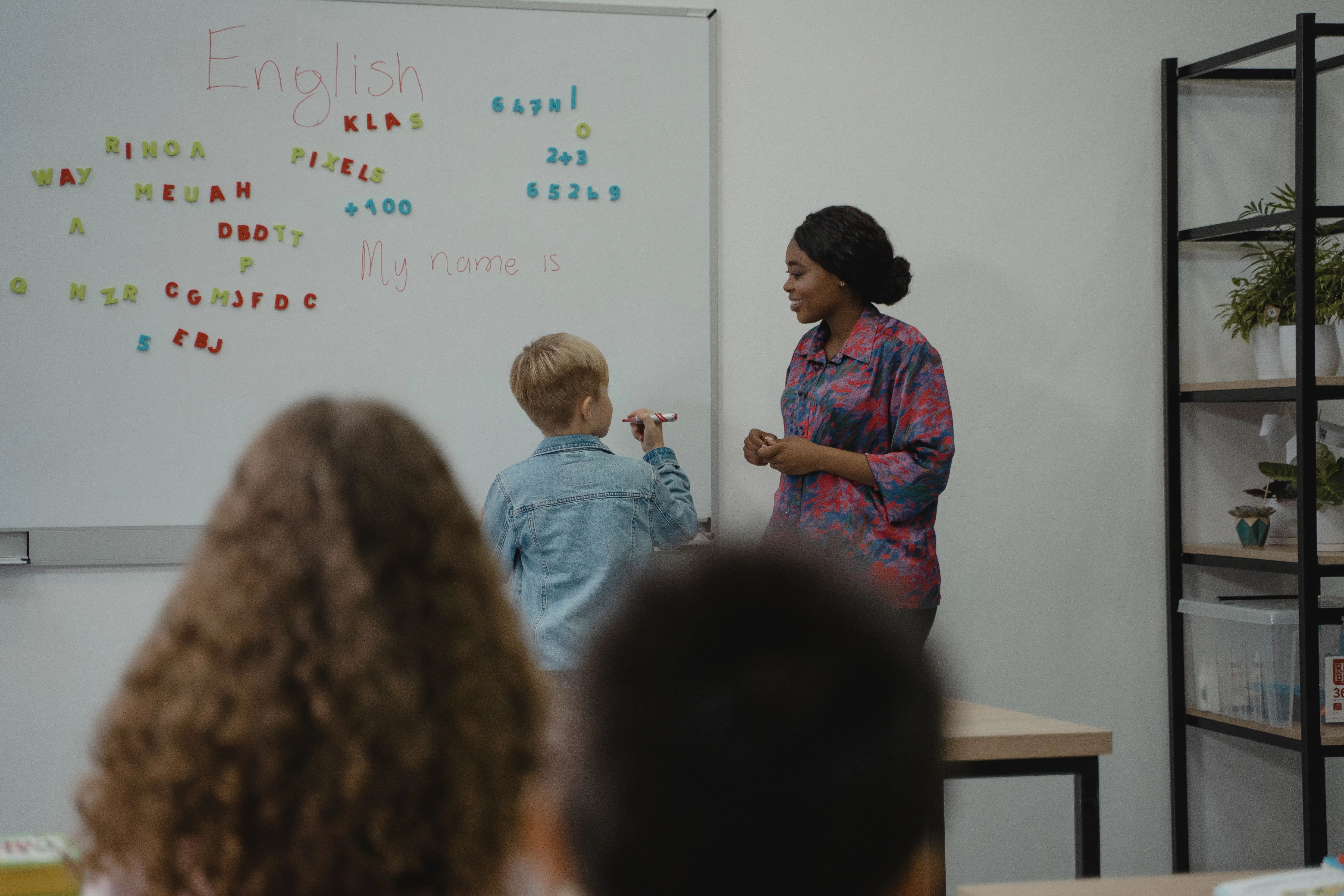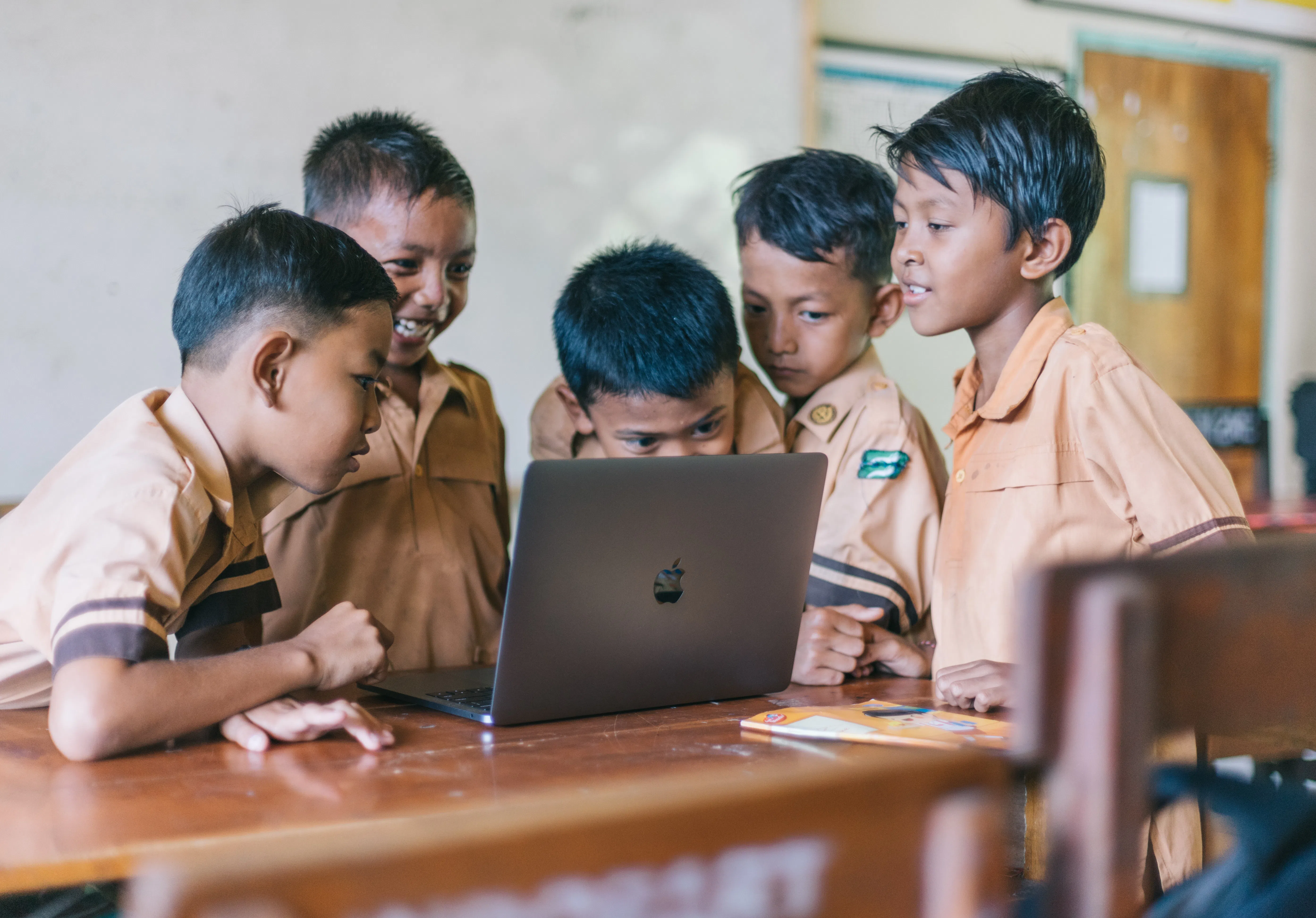Global Literacy Day: 14 Statistics That Will Blow Your Mind
8 minuteRead

There are a still large number of people who don't have the chance to attend school. And people who do have a chance, do not always have access to quality education. Education is a powerful tool for change and it is a right, not a privilege. Literacy is the ability to read and write. To be literate, one must not only know how to read and write but also comprehend what they are reading. Literacy is an important aspect of education that has been neglected in many parts of the world. When people are unable to read, or simply do not understand what they are reading, it can be difficult for them to make informed decisions about their lives and futures. So, the question is should you be concerned? Of course yes. The lack of literacy skills can lead to a lack of empowerment and create a cycle of poverty for generations.
As I mentioned to you, Literacy is defined as the ability to read and write. According to the UN, over 774 million people are illiterate. The World Literacy Foundation reports that 1 in 10 children are unable to read, write, or do the math on a level expected for their age. This puts them at risk of exploitation or not being able to support themselves financially. In this article, we want to explore the importance of literacy by looking at 14 facts about literacy that may surprise you.

What is meant by Global literacy?
In modern times the concept of global literacy is understood to have far-reaching implications for the education and well-being of children, young people and adults. The Global Adult Literacy Network defines literacy as the "ability to read and write, comprehend and communicate information".
Literacy is more than just reading and writing though. It also encompasses all the technical, social and other skills required to make the most of the benefits that access to the internet and education can bring.
International Literacy Day: What’s that?
International Literacy Day is an opportunity to recognize the commitment of individuals and organisations who strive to ensure that everyone has the skills needed to interact with the world. The United Nations celebrates International Literacy Day every September 8 since 1967 to highlight the value of reading and writing. The event will be celebrated on 8 September by the United Nations to highlight literacy and opportunities for civil society and governments in the world to address literacy issues. This event is so huge that many political analysts see it as the absolute key to socio-economic development.
The United Nations International Literacy Day is about motivating and empowering all adults to improve literacy skills across the globe by providing courses in their communities. International Literacy Day (ILD) 2021 will be celebrated under the theme “Literacy for a human-centred recovery: Narrowing the digital divide”
Few statistics about Global literacy that will blow your mind
Literacy is a fundamental right for people of every age, gender, and circumstance. It is necessary for economic empowerment, social advancement, and individual well-being. Teaching a child how to read can empower them to become educated, have a better quality of life, and be self-sufficient. That said, some people may wonder why this is a public holiday at all. Perhaps, like me, you're not sure exactly why. Well, let me assure you that this is an important occasion, which is why I'd like to use this column to look at some of the statistics from global literacy day.
Here are a few facts you might want to know:
#1
According to the General Conference, 773 million adults and young people worldwide lack basic literacy skills. It is a day of reckoning as new statistics from the UNESCO Institute for Statistics (UIS) show that 75.7 million adults, including 11.5 million young people between the ages of 15 and 24 cannot read a simple sentence or write a simple one.
#2
Despite major advances in global literacy in recent decades, one in five countries still has a gender gap in the literacy rate of young people. Wider literacy and gender gaps between older adults and older people obscure the progress made in terms of gender differences between children and young people. On International Literacy Day, we are considering what is needed to close these gaps, harnessing the power of literacy and learning to promote gender equality.
#3
In 2016, the global literacy rate was 83% for adult women compared to 90% for adult men. The latest NSS data shows that the literacy rate of women in the population of working age is 59%, 20 percentage points lower than that of men in the same age group.
#4
Adult literacy has achieved full adult literacy in North America, Europe, West Asia and Central Asia for men and women under the age of 15. In most countries in East Asia, the Pacific, Latin America and the Caribbean, adult literacy are above 90%. Large parts of the world also have high literacy rates among young people, suggesting that illiteracy is becoming less common as younger generations with higher levels of education replace older ones.
#5
Those countries with the lowest literacy rates worldwide are Mali (1.9%), Niger (14.4%) and Burkina Faso (12.8%). The global monitoring report on education (2006) has the lowest adult literacy rate in Southwest Asia (58.6%) followed by Sub-Saharan Africa (59.7%) and Arab countries (62.7%). Outside Sub-Saharan Africa and South-West Asia, there are some countries with very low literacy rates.
#6
In Europe and Central Asia, Moldova reported that 100% of its young population could read and write in 2012, while sub-Saharan Africa reported that only 70% of young people could read and write in 2010.
#7
The gender gap between men and women is also a major problem in Nigeria, where men have a literacy rate of 42.9% and women 15.1%. State-level analysis confirms that the gap between the male and female literacy rates is shrinking among children and adolescents, suggesting greater gender parity in literacy. It is noteworthy that in countries where gender equality in literacy has been achieved, girls perform better than boys.
#8
Literacy not only enriches an individual's life but also creates opportunities for people to develop skills that help them take care of themselves and their families. However, the debate on the prevalence of illiteracy and the large differences in literacy and gender among older adults obscures the progress made in terms of literacy among children and adolescents. One way forward is to plan for the future, and the UK aims to improve global literacy statistics by focusing on the importance of education in communities and the opportunities available to develop literacy skills for girls.
#9
In the context of international development, literacy is often equated with reading literacy in the utilitarian sense, as a skill that every student should possess and apply. Literacy also leads to better health, as individuals have access to information and hygiene.
#10
Thanks to changes to the 1991 and 2001 figures, India's literacy rank has risen from 121 last year to 105 this year. Schools remain the main place where young people acquire basic literacy skills, and young people's literacy levels are closely linked to access to, preservation of and quality of learning. As the access to education increases, literacy levels should rise in parallel.
#11
The literacy and monitoring programmes (LAMs) developed by the UIS focus on more than basic literacy skills. Strict and respected programmes are designed to measure the higher qualifications of adults and young people in many countries where access to quality education remains limited and not basic literacy skills. The information presented here includes data from high-income countries and Singapore which are not members of the UN Educational, Scientific and Cultural Organisation.
#12
In celebrating these skills, I hope to focus on the impact of literacy rates and related government policies, and on how to make policy and institutional changes. The multilingual context has been in the spotlight this year, and there is room for greater attention in terms of literacy and improving education.
#13
In developing countries, especially literacy is one of the key elements in promoting sustainable development, helping people make the right choices in terms of education growth and socio-economic development. Children and adults around the world are affected by literacy restrictions that do not arise from interactions with complex social and linguistic phenomena such as multilingualism, cultural practices and gender roles in social and educational institutions. Given my professional commitment to this issue, I decided to look at the World Bank literacy data to see literacy rates and progress in the face of these challenges.
#14
In 2010 Europe and Central Asia had the highest literacy rates among young people in the world with 99.7% of their youth registered as educated. To improve literacy rates, U.S. military trainers teach Afghan army recruits how to read and fire weapons. The UNESCO Institute for Lifelong Learning has been providing technical assistance to the Afghan government since 2012 to improve the literacy skills of an estimated 12 million people.
Is Gender equality a key to the success of any society?
- When we talk about global literacy, it's also important to mention gender equality. In this day and age women are still being discriminated against because they are females. Girls grow up not being able to reach their full potential because they're being told that they can't do it or that it's not appropriate for them to do so.
- Every day, we learn about the need for global literacy and gender equality. These topics are important to everyone. They affect our lives and the lives of those around us. We all participate in this world, and we can all influence change in it. Today, we're going to talk about the importance of these issues and the ways that we can work towards progress globally. Studies show that there is a strong correlation between gender inequality and illiteracy levels in various countries around the world. This is because many women cannot read or write, so they cannot know their rights as human beings. They cannot also teach their children or provide for themselves and their families. Men often view women as inferior and will therefore reject them from educational opportunities.
- Literacy is fundamental to economic and social development. One-third of the world's population lacks basic literacy skills and, in some countries, the illiteracy rate among women is over two times higher than for men. The gender divide in literacy rates reflects deep inequalities in society. When girls are denied education, they not only miss out on the benefits of literacy but also their future potential. We must work together to end this gender divide in literacy and provide girls with the same opportunities as boys.
- There are many benefits of gender equality, including greater educational attainment for girls, increased participation in the economy, reduced infant mortality rates, and better mental health for girls and boys. Global literacy and gender equality work together to make our world better.
Conclusion
Literacy is one of the most basic skills that everyone needs to succeed in life. It's also a skill that some people are not lucky enough to have access to. The lack of literacy has far-reaching effects. Illiteracy can lead to poverty, family breakdown, and low self-esteem. Literacy also provides an opportunity for inspiration and self-confidence.
Cited Sources
- https://plan-uk.org/blogs/the-importance-of-education-how-literacy-improves-lives
- https://internationalcommunicationproject.com/campaign-news/international-literacy-day/
- https://www.orfonline.org/research/literacy-in-india-the-gender-and-age-dimension-57150/
- https://www.globalpartnership.org/blog/international-literacy-day-reckoning
- https://en.unesco.org/commemorations/literacyday
- https://www.unicef.org/education
- https://www.theguardian.com/global-development-professionals-network/2014/jun/17/literacy-women-illiteracy-development
- https://www.vitalvoices.org/2019/09/international-literacy-day-the-literacy-gender-gap/
- https://en.wikipedia.org/wiki/Literacy
- https://medium.com/ungei-blog/opening-doors-to-gender-equality-through-literacy-2a144c2973a2
- https://timesofindia.indiatimes.com/india/international-literacy-day-2020-how-literacy-rate-is-calculated-in-india/articleshow/77991200.cms
- https://blogs.worldbank.org/opendata/international-literacy-day-what-recent-youth-literacy-data-tell-us
- https://www.soroptimistinternational.org/international-literacy-day/
- https://www.humanium.org/en/humanium-celebrates-the-international-day-of-literacy/
- https://serudsindia.org/blog/international-literacy-day-2018-global-stats/
Write, Record and Answer! Consume Unlimited Content! All you need to do is sign in and its absolutely free!
Continue with one click!!By signing up, you agree to our Terms and Conditions and Privacy Policy.













